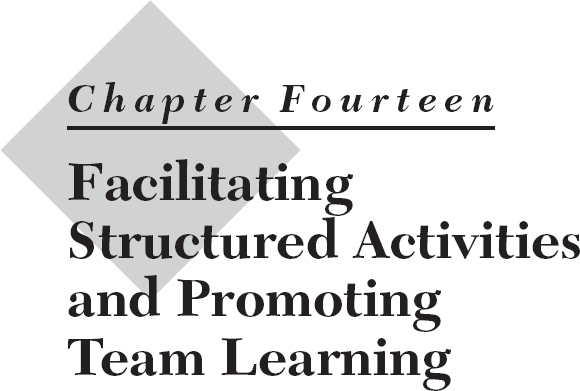
This chapter has two goals. One is to offer advice on facilitating structured activities used throughout an active training program. These activities typically utilize small-group formats for short periods of time. The other is to offer advice on promoting team learning. This endeavor involves placing participants in small groups or teams for an extended period of time.
STRUCTURED ACTIVITIES
In Chapters 5 and 6, we examined alternatives to formal presentations as well as several experiential learning approaches. Because these kinds of structured activities play a central role in active training programs, you will need to develop an array of facilitation skills to make them effective learning experiences. Listening to a presentation, watching a demonstration, or even participating in a discussion demands less effort and risk than does taking part in a role play, an exercise, or a project. Consequently, one of your basic responsibilities as a facilitator of experiential learning is that of motivating participation. Since it is difficult to get participants to do exactly what you want them to do, especially if any of your activities are complicated, you also need to become an expert at directing participants' activities. As an activity unfolds, the dynamics of the training group can impede success, so you will need to be comfortable with managing the group process. In the middle of ...
Get Active Training: A Handbook of Techniques, Designs, Case Examples, and Tips, 4th Edition now with the O’Reilly learning platform.
O’Reilly members experience books, live events, courses curated by job role, and more from O’Reilly and nearly 200 top publishers.

